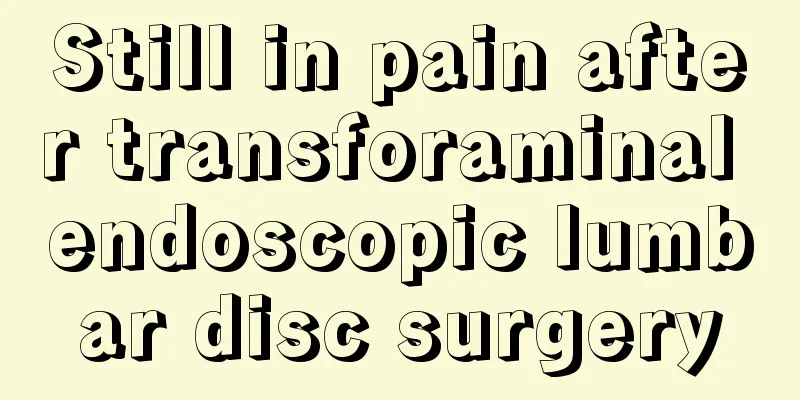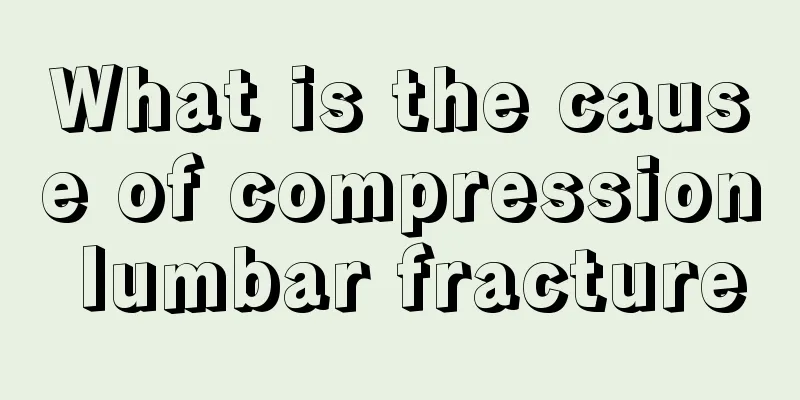Still in pain after transforaminal endoscopic lumbar disc surgery

|
It is abnormal to still have lumbar pain after intervertebral constriction surgery. It may be due to the failure of the operation, because this type of surgery mainly repairs the compressed nerves. If the operation fails and the compressed nerve site is not repaired, it will cause bone hyperplasia in the nerve root canal. Therefore, everyone should pay attention to the precautions after intervertebral constriction surgery, which will help the recovery of the lumbar spine after surgery and improve the success rate of the operation. Perforaminal endoscopic lumbar disc surgery is a very effective surgery because it directly reaches the area where the nerve is compressed, sees the protruding disc tissue, and removes it. It also cleans up the bony part that causes the narrowing of the nerve root canal. Therefore, the purpose of relieving pain can be achieved immediately after the surgery. There are also a small number of patients (less than 20%) who will experience a rebound of symptoms one or two weeks after the operation. The leg pain that did not occur before will start to hurt again at this time. What is the reason? Because each person's disease course is different, some nerve roots are compressed by the intervertebral disc for a long time. After the compression is relieved, the nerve roots have their own recovery process, and the recovery process generally takes about 1-2 months. So at this time, we use some nerve nourishing drugs at the same time, and the symptoms will slowly disappear. Precautions after transforaminal endoscopic lumbar discectomy After perforaminal endoscopic lumbar disc surgery, certain rehabilitation is required. There are several principles for rehabilitation. In the short term after surgery, bed rest is emphasized as the main focus, because there is still a potential risk of bleeding at this time, so bed rest should be emphasized as much as possible for 3 days after surgery. However, bed rest does not mean lying in bed and doing nothing. Bed rest must include active training of the upper and lower limbs in bed, gradually performing straight leg raising exercises, and isometric contraction exercises of the lumbar and back muscles. You can wear a waist belt 3 days to 3 weeks after surgery and engage in moderate, bedside, and indoor activities. 3-6 weeks after the operation, you can gradually complete some daily activities under the protection of the waist belt and gradually strengthen the functional training of the waist and back muscles. Three months after the operation, while wearing the waist belt, the patient can complete daily activities independently, gradually participate in general work, and go to the hospital for regular check-ups. If after diagnosis and reexamination by a doctor, it is recommended to reduce waist circumference as much as possible within 3 months. However, in the future long-term rehabilitation, patients are advised to develop good waist habits: try to reduce bending and twisting at any time; combine work and rest, avoid sitting or standing for long periods of time; do not try to move heavy objects; and insist on exercising the waist and back muscles. Some patients may ask doctors, since they have undergone perforaminal endoscopic lumbar discectomy and cured their herniated disc, they should also try to avoid bending or twisting their waist, sitting or standing for long periods of time, or maintaining a protective posture when lifting heavy objects. Because through clinical observation, some patients have intervertebral disc herniation at a relatively early age, most normal people do not have intervertebral disc herniation, but some patients will develop intervertebral disc herniation at a relatively young age, which may have a lot to do with their usual living habits. Frequent bending over or frequent lifting of heavy objects at work can easily lead to a herniated disc. The herniated disc that compresses the nerves can be cured, but the functions of other discs must be protected. Therefore, patients like this are advised to reduce lumbar activities and weight-bearing work. |
<<: Precautions after transforaminal endoscopic lumbar discectomy
>>: How to massage the wings of the nose
Recommend
What should I do if my knee hurts due to wind?
If the knees are affected by wind and cold, it wi...
Will lung cancer cause fever?
Does lung cancer cause fever? 1. The main symptom...
What are the sex life skills for adults
With the development of society, people's con...
Tongue numbness after nasopharyngeal cancer treatment
Tongue numbness after nasopharyngeal cancer treat...
What to do if there are termites in the house
Termites usually appear in April and May in summe...
How to repair gaps between teeth
The gap between teeth is the space between teeth....
Is ovarian tumor related to genetics?
When someone in the family has an ovarian tumor, ...
What are the dangers of extracorporeal lithotripsy for kidney stones
Of course, we should pay attention to the correct...
Experts talk about dietary considerations for kidney cancer
In addition to actively cooperating with doctors ...
What to do if eczema forms yellow scabs
If you have a constitution that is prone to eczem...
There are so many symptoms of severe liver qi stagnation
The five internal organs of the human body are: h...
How to make seaweed rice roll
There are many kinds of common food in life. Diff...
In-depth analysis: Is skin cancer surgery a minor operation?
In the vast world of medicine, every surgery carr...
How to remove mildew spots on clothes
Many people do not pay much attention to the care...
The efficacy and function of the traditional Chinese medicine Tripterygium wilfordii
I don’t know if you have seen the Chinese medicin...









